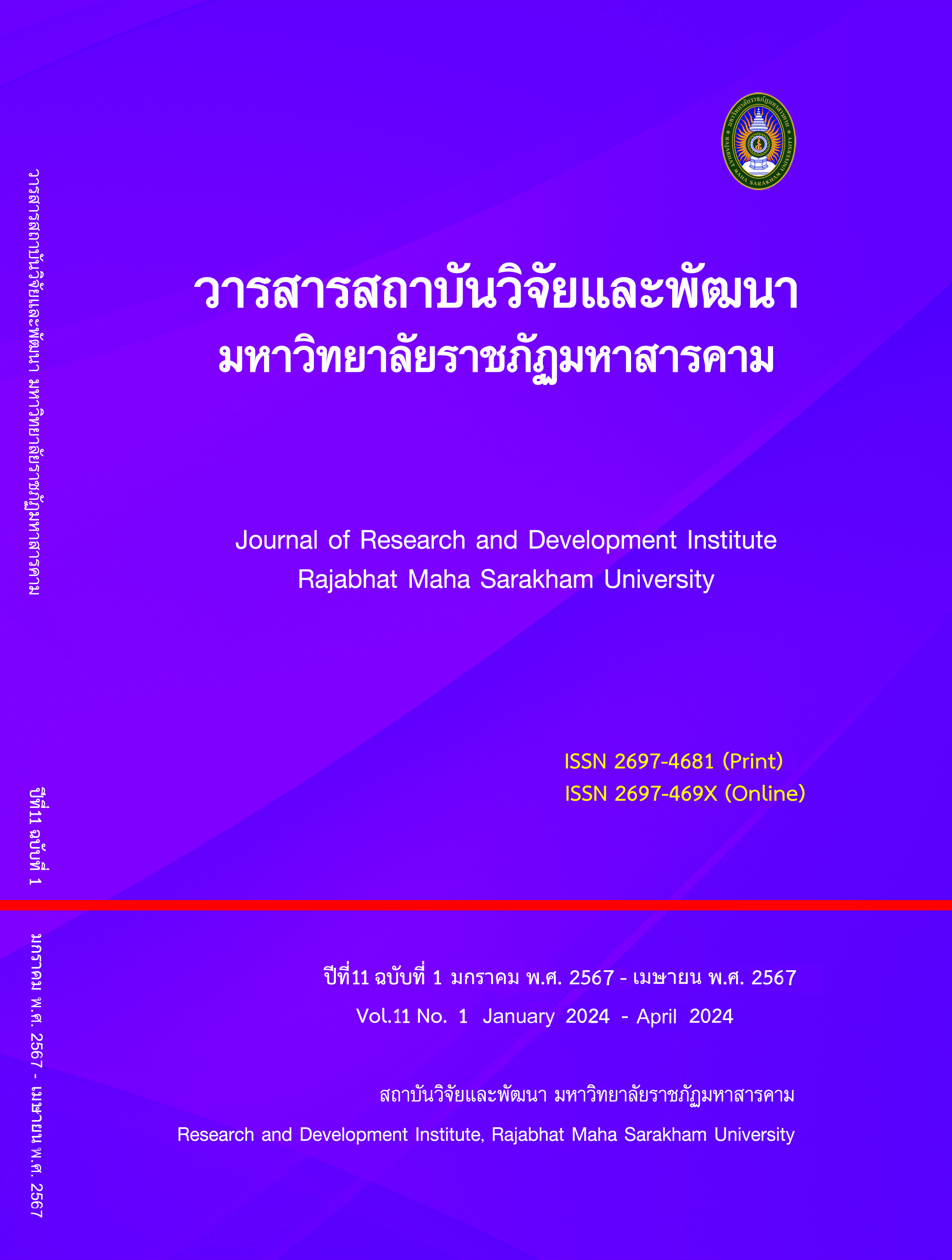The Guidelines for Developing Technological Leadership of School Administrators Under the Secondary Educational Service Area Office Kalasin
Keywords:
Development guidelines, Technological leadership, School administratorsAbstract
The purposes this research were to 1) study the current conditions, desirable condition and need assessment of technological leadership of school administrators under the secondary educational service area office Kalasin. 2) to study the guidelines for technological leadership of school administrators under the secondary educational service area office Kalasin. The research was divided into 2 phases: Phase 1 study the current conditions, desirable condition and need assessment of technological leadership of school administrators. The sample group were 320 school administrators and teachers. The research instrument were questionnaires discrimination was 0.21–0.69, reliability of .88. The statistics used for data analysis were mean and deviation standard. Phase 2: study the guidelines for technological leadership of school administrators. The target groups include 3 school for visiting best practices and 7 experts for assess suitability possibility of guideline. The research instrument were interview form and assessment form of guidelines. The results of the research were as follows:
1. The current state in overall was moderate average and the desirable state in overall was in the highest level. The need assessment rank from high to low level was 1) Ethics using technology 2) Technology vision3) Technology for the administration 4) Technology for evaluation 5) Technology for learning, respectively.
2. Guidelines for technological leadership of school administrators under the secondary educational service area office Kalasin, Include 1) principle and reason 2) objective 3) content 4) development process and 5) measurement, Evaluation, feasibility and utility was the highest in overall.
References
Anderson, R. E., & Dexter, S. L. (2005). School technology leadership: An empirical
investigation of prevalence and effect. Educational Administration Quarterly,
(1), 49-82.
Chairat, R. (2013). The relationship between technology leadership and organizational
efficiency information of school administrators. Master’s Project, M.Ed.
(Educational Administration). Rajabhat Surat Thani University.
Changkwanyuen, P. (2013). Techniques for writing and producing textbooks. (7th ed).
Bangkok: Chulalongkorn University.
Charungsirawat, R. (2011). Practice manual writing techniques. Khon Kaen:
Khon Kaen University.
Krejcie, R. V. & Morgan, D. W. (1970). Determining Sample Size for Research Activities.
Educational and Psychological Measurement, 30(3), p. 607-610.
Office of the Education Council. (2017). Education in Thailand. Bangkok : Prigwan
graphic.
Office of the Education Council, Ministry of Education. (2017A). The national scheme of
education B.E. 2560-2579. Bangkok: Prikwran Graphic. [in Thai]
Office of the Basic Education Commission. (2012). Developing education in
mountainous and remote area . Bangkok : Thailand Agricultural Cooperative
Publishing. (in Thai)
Prajuk, T. (2017). Technology leadership information of school administrators
according to teachers' opinions under Surat Thani primary educational service
area office 3. Master’s Project, M.Ed. (Educational Administration). Rajabhat
Surat Thani University.
Sirinimittrakul, K. (2010). Development of product quality control manuals of Genesis
Associates Co., Ltd. Thesis, Master degree in business administration, school of
management science, Sukhothai Thammathirat University.
Secondary educational service area office Kalasin. (2021). Action plan of Secondary
educational service area office Kalasin 2020. Kalasin : Secondary educational
service area office Kalasin.
Srisa-ard, B. (2010). Fundamental studies. (8th ed.). Bangkok: Suviyasas publisher.
Wongwanich, S.. (2015). Needs assessment research (3rd ed.). Bangkok: Chulalongkorn
University Press.
Downloads
Published
How to Cite
Issue
Section
License
Copyright (c) 2024 วจนพร ทุมมาวัด, กฤษกนก ดวงชาทม

This work is licensed under a Creative Commons Attribution-NonCommercial-NoDerivatives 4.0 International License.
Articles that are published are copyrighted by the authors of the articles







